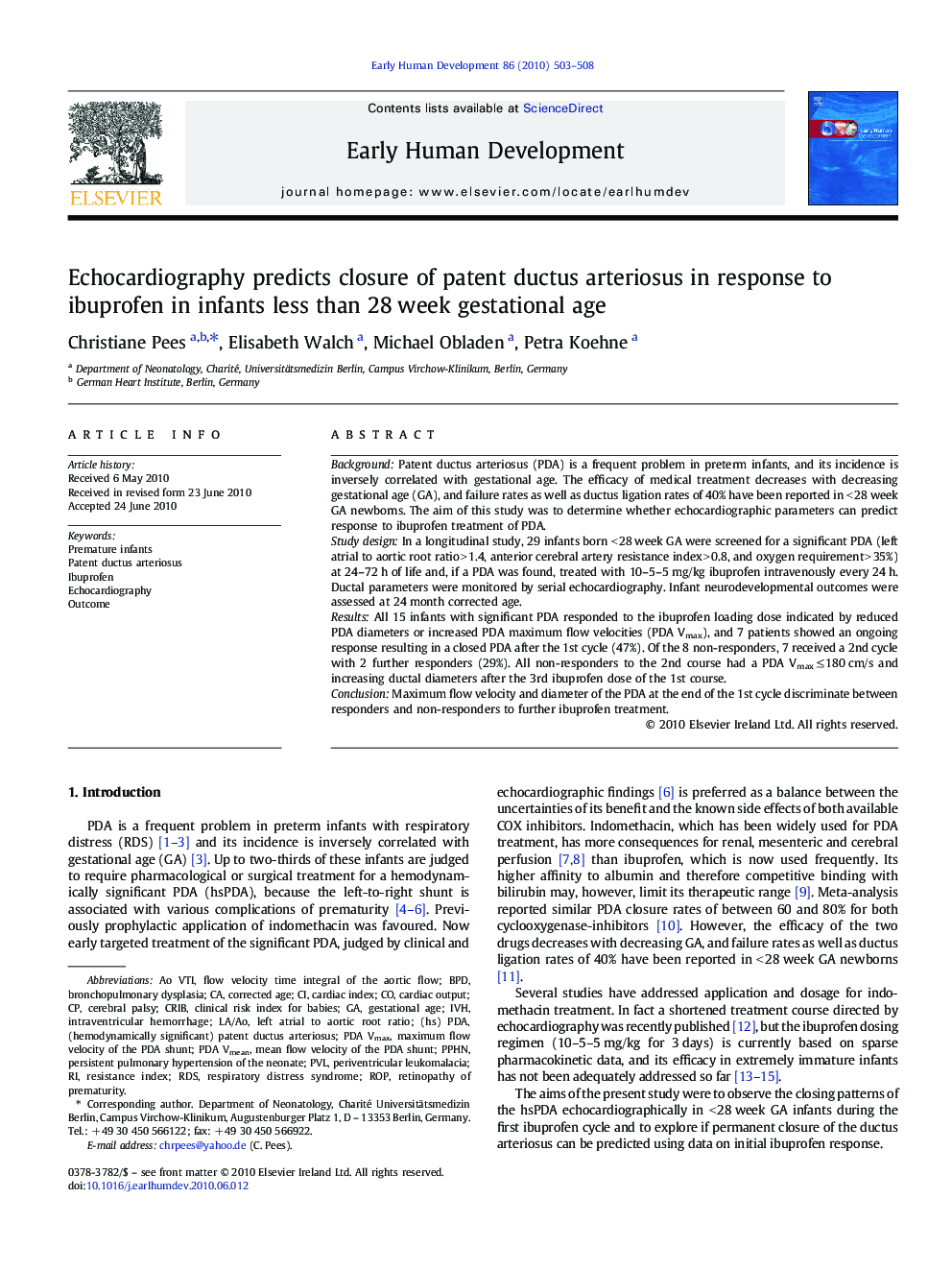| Article ID | Journal | Published Year | Pages | File Type |
|---|---|---|---|---|
| 3917605 | Early Human Development | 2010 | 6 Pages |
BackgroundPatent ductus arteriosus (PDA) is a frequent problem in preterm infants, and its incidence is inversely correlated with gestational age. The efficacy of medical treatment decreases with decreasing gestational age (GA), and failure rates as well as ductus ligation rates of 40% have been reported in < 28 week GA newborns. The aim of this study was to determine whether echocardiographic parameters can predict response to ibuprofen treatment of PDA.Study designIn a longitudinal study, 29 infants born < 28 week GA were screened for a significant PDA (left atrial to aortic root ratio > 1.4, anterior cerebral artery resistance index > 0.8, and oxygen requirement > 35%) at 24–72 h of life and, if a PDA was found, treated with 10–5–5 mg/kg ibuprofen intravenously every 24 h. Ductal parameters were monitored by serial echocardiography. Infant neurodevelopmental outcomes were assessed at 24 month corrected age.ResultsAll 15 infants with significant PDA responded to the ibuprofen loading dose indicated by reduced PDA diameters or increased PDA maximum flow velocities (PDA Vmax), and 7 patients showed an ongoing response resulting in a closed PDA after the 1st cycle (47%). Of the 8 non-responders, 7 received a 2nd cycle with 2 further responders (29%). All non-responders to the 2nd course had a PDA Vmax ≤ 180 cm/s and increasing ductal diameters after the 3rd ibuprofen dose of the 1st course.ConclusionMaximum flow velocity and diameter of the PDA at the end of the 1st cycle discriminate between responders and non-responders to further ibuprofen treatment.
